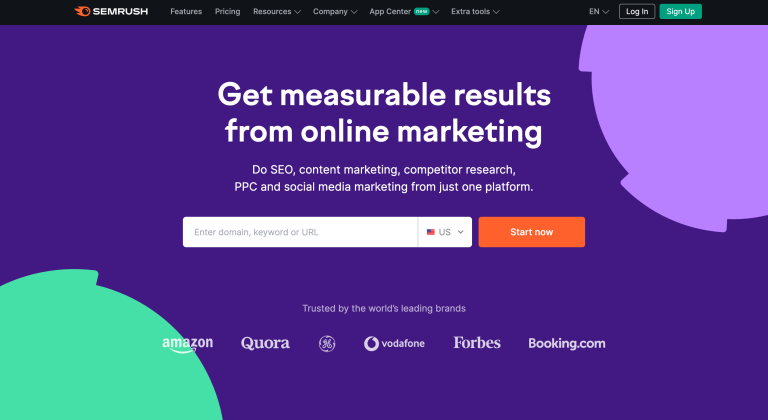Cracking the Code: Mastering Search Intent for Higher Rankings
Introduction
In the digital realm, optimizing content for search intent has become a crucial determinant of online success. Search engines have evolved to comprehend user queries at a deeper level, prioritizing results that align seamlessly with the intent behind each search. Mastering this concept is no longer an option; it’s a necessity for businesses aiming to capture the attention of their target audience and outperform competitors in the ever-competitive online landscape.
This comprehensive guide delves into the intricacies of search intent, providing a roadmap for content creators, SEO professionals, and website owners to elevate their online presence. From understanding the nuances of user intent to implementing practical strategies, this resource empowers you to craft content that resonates with your audience and earns the coveted top spots in search engine results pages (SERPs).
Table of Contents
- Understanding Search Intent: The Backbone of Relevance
- Classifying Search Intent: Navigational, Informational, and Transactional
- Uncovering Hidden Search Intent: Going Beyond the Surface
- Aligning Content with Search Intent: A Step-by-Step Approach
- Optimizing for Search Intent: Key Strategies
- Leveraging SERP Features and User Behavior
- The Importance of Expertise, Authority, and Trust
- Continuous Monitoring and Improvement
- Conclusion
Understanding Search Intent: The Backbone of Relevance
Search intent, or user intent, refers to the underlying motivation behind a user’s search query. It encapsulates the specific need, desire, or goal that the user aims to fulfill through their search. Understanding this intent is paramount for search engines to deliver relevant and satisfactory results, as it helps them decipher the contextual meaning behind the keywords used in the query.
For example, when a user searches for “best running shoes,” their intent is likely to find informational content that provides recommendations, reviews, or comparisons of top-rated running shoes. On the other hand, a search for “buy running shoes” signals a transactional intent, where the user is actively seeking to purchase a pair of running shoes.
By comprehending the nuances of search intent, content creators can tailor their approach to align with the specific needs of their target audience, ultimately improving user satisfaction and increasing the likelihood of higher search engine rankings.
Classifying Search Intent: Navigational, Informational, and Transactional
To effectively optimize content for search intent, it’s essential to understand the different types of intent that users may have. While there are various classifications, the three primary categories are:
- Navigational Intent: Users with navigational intent are typically seeking a specific website or online destination. For instance, searching for “Facebook” or “YouTube” often indicates a desire to visit those respective platforms directly.
- Informational Intent: This type of intent is driven by a user’s desire to acquire knowledge, learn about a topic, or find answers to specific questions. Queries like “what is SEO?” or “how to change a tire” fall under this category.
- Transactional Intent: Users with transactional intent are actively seeking to complete a transaction, such as making a purchase, signing up for a service, or completing a registration process. Searches like “buy iPhone 14” or “order pizza near me” are examples of transactional intent.
While this broad classification provides a foundation for understanding search intent, it’s important to recognize that user queries can often encompass multiple intents or evolve as the user’s search journey progresses. For instance, a search for “best laptop” may initially have an informational intent but could later transition into a transactional intent as the user narrows down their options and decides to make a purchase.
Uncovering Hidden Search Intent: Going Beyond the Surface
While the broad classifications of search intent offer a starting point, truly understanding the underlying intent often requires a deeper analysis. Users may employ ambiguous or broad keywords that can have multiple interpretations, making it challenging to discern their true intent solely based on the surface-level query.
To uncover the hidden search intent, it’s crucial to examine various contextual factors and user behavior patterns. This includes analyzing search result performance, user engagement metrics, and the content formats and angles prevalent in the top-ranking pages for a given query.
For example, if a search for “air fryer” yields mostly blog posts and product reviews in the top results, it’s likely that users are in the research phase and seeking informational content to guide their purchase decision. On the other hand, if the top results are predominantly product listing pages from e-commerce sites, it may indicate that users are further along in the buyer’s journey and ready to make a purchase.
By closely observing these signals, content creators can gain valuable insights into the specific needs and expectations of their target audience, enabling them to create content that aligns with the true search intent and increases their chances of ranking higher in the SERPs.
Aligning Content with Search Intent: A Step-by-Step Approach
Aligning content with search intent is a multifaceted process that requires a strategic approach. Here is a step-by-step guide to help you achieve this:
- Analyze the SERPs: Conduct a thorough examination of the top-ranking pages for your target keywords. Observe the content types, formats, and angles prevalent in these results, as they provide valuable insights into the search intent.
- Identify Content Gaps: Assess the content gaps in the existing search results. Look for areas where you can provide more comprehensive, in-depth, or unique information to better satisfy the user’s intent.
- Conduct Keyword Research: Use keyword research tools to identify related keywords and phrases that may further clarify the search intent. Analyze the search volume, competition, and user behavior patterns associated with these keywords.
- Leverage User Behavior Signals: Examine user engagement metrics, such as bounce rates, dwell time, and click-through rates, to gauge whether your existing content effectively meets the user’s intent. Low engagement may indicate a mismatch between content and intent.
- Refine Content Structure and Format: Based on your analysis, determine the most appropriate content structure and format to align with the search intent. This may involve creating comprehensive guides, listicles, product comparisons, or visual content like videos or infographics.
- Incorporate Relevant Entities and Topics: Ensure that your content covers all relevant entities, topics, and subtopics related to the search query. This depth and breadth of coverage demonstrate expertise and increase the likelihood of satisfying the user’s intent.
- Optimize for Featured Snippets and SERP Features: Identify opportunities to capture featured snippets, knowledge panels, or other SERP features by structuring your content in a way that directly answers common user questions or provides concise summaries.
By following this step-by-step approach, you can create content that resonates with your target audience, meets their specific needs, and increases the chances of achieving higher search engine rankings.
Optimizing for Search Intent: Key Strategies
While aligning content with search intent is crucial, there are several additional strategies that can further optimize your efforts:
- Leverage Title Tags and Meta Descriptions: Crafting compelling and intent-focused title tags and meta descriptions can improve click-through rates and signal relevance to search engines. Use language that clearly communicates the intent of your content and entices users to click through.
- Implement Keyword Clustering: Identify and incorporate related keywords and phrases within your content. This approach helps to reinforce the relevance of your content to different aspects of the search intent and improves the chances of ranking for a wider range of relevant queries.
- Optimize for Mobile: With an increasing number of searches being conducted on mobile devices, optimizing your content for mobile experiences is crucial. Ensure that your content is responsive, loads quickly, and provides a seamless user experience on various screen sizes.
- Incorporate Multimedia Elements: Enhance your content with relevant images, videos, infographics, or interactive elements. These multimedia components can improve user engagement, provide additional context, and cater to different learning preferences, ultimately better satisfying the user’s intent.
- Encourage User Engagement: Foster user engagement by incorporating interactive elements, such as quizzes, polls, or comment sections. This not only enhances the user experience but also provides valuable feedback and insights into user behavior and preferences, which can inform future content optimization efforts.
- Leverage Internal Linking: Strategically link to relevant internal pages within your content. This practice not only improves site navigation and user experience but also helps search engines better understand the relationship between different content pieces, reinforcing the relevance and authority of your site.
By implementing these strategies in conjunction with aligning content with search intent, you can create a compelling and user-centric experience that resonates with your target audience and increases the likelihood of achieving higher search engine rankings.
Leveraging SERP Features and User Behavior
Search engines continuously evolve their algorithms and user interfaces to provide a more seamless and intuitive experience for users. SERP features, such as featured snippets, knowledge panels, and related questions, offer valuable insights into user behavior and search intent.
By analyzing these SERP features, content creators can gain a deeper understanding of the specific information users are seeking and the format in which they prefer to consume it. For example, if a search query consistently triggers a “People Also Ask” box, it may indicate that users have additional queries related to the topic, which should be addressed in the content.
Additionally, monitoring user behavior signals, such as click-through rates, dwell time, and bounce rates, can provide valuable feedback on whether your content is effectively satisfying the user’s intent. Low engagement metrics may signify a mismatch between the content and the user’s expectations, prompting the need for content optimization or refinement.
By leveraging SERP features and user behavior data, content creators can stay ahead of the curve, anticipate user needs, and continuously refine their content strategy to align with evolving search intent patterns.
The Importance of Expertise, Authority, and Trust
In today’s crowded online landscape, establishing expertise, authority, and trust (E-A-T) is paramount for content creators and website owners. Search engines place a strong emphasis on these factors when determining the relevance and quality of content, as they aim to provide users with accurate and trustworthy information.
Demonstrating expertise involves showcasing in-depth knowledge and mastery of the subject matter. This can be achieved by incorporating authoritative sources, expert insights, and comprehensive coverage of relevant topics and subtopics within your content.
Building authority involves establishing your website or brand as a credible and reputable source within your industry or niche. This can be accomplished through strategies such as acquiring high-quality backlinks, leveraging social media presence, and fostering a strong online reputation.
Trust is established by adhering to ethical practices, ensuring transparency, and prioritizing user privacy and security. This includes measures such as providing clear privacy policies, implementing secure browsing protocols, and maintaining a consistent brand voice and messaging across all platforms.
By prioritizing E-A-T, content creators not only increase their chances of ranking higher in search engine results but also cultivate a loyal and engaged audience that values the expertise and trustworthiness of the information provided.
Continuous Monitoring and Improvement
Optimizing for search intent is an ongoing process that requires continuous monitoring and improvement. Search engine algorithms and user behavior patterns are constantly evolving, necessitating a proactive approach to content optimization.
Regular analysis of search engine result pages (SERPs) and user engagement metrics can provide valuable insights into changing search intent patterns and content performance. By monitoring these factors, content creators can identify areas for improvement, adapt their strategies, and stay ahead of the curve in terms of delivering relevant and engaging content.
Additionally, incorporating feedback mechanisms, such as user surveys, comments, or social media interactions, can provide direct insights into user preferences and pain points. This valuable feedback can inform content optimization efforts, ensuring that the content remains aligned with the evolving needs and expectations of the target audience.
Continuous monitoring and improvement also involve staying up-to-date with the latest search engine algorithm updates and best practices. By actively participating in industry forums, attending conferences, and engaging with thought leaders, content creators can stay informed and adapt their strategies accordingly.
Conclusion
In the ever-evolving digital landscape, mastering search intent is no longer an option but a necessity for achieving online success. By understanding the nuances of user intent, classifying search queries, and implementing practical strategies to align content with user expectations, businesses can effectively capture the attention of their target audience and outperform competitors in search engine rankings.
This comprehensive guide has provided a roadmap for content creators, SEO professionals, and website owners to navigate the complexities of search intent optimization. From dissecting the different types of intent to uncovering hidden search intent, aligning content with user needs, optimizing for key strategies, leveraging SERP features and user behavior, establishing expertise, authority, and trust, and continuously monitoring and improving, this resource equips you with the knowledge and tools necessary to create content that resonates with your audience and earns the coveted top spots in search engine results.
Remember, optimizing for search intent is an ongoing journey that requires dedication, adaptability, and a deep understanding of user needs and search engine algorithms. By embracing this approach and staying committed to delivering high-quality, relevant content, you can position your brand as a trusted authority in your industry and achieve sustainable online success.







